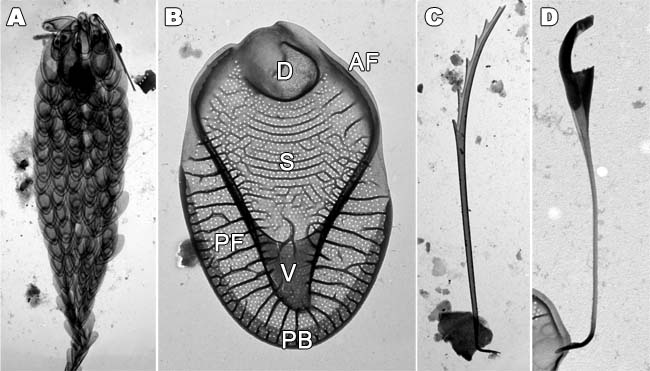Mallomonas
Members of the genus Mallomonas are solitary, free-living, autotrophic flagellates, surrounded by an envelope of silica scales. Scales consist of a perforated basal plate, often overlaid by secondary patterns. In most species, scales are tripartite, comprising a dome, shield and flange.
It is common that these species have some or all of their scales bearing bristles. They are formed as flat elements and then roll up into shape. Bristles either glued to the scale (primitive species), or articulated by a special foot in the concavity of the dome (when present). The bristles are smooth or serrated, and the tips may be intricately shaped (bifurcated, helmet-shaped).
Identification of Mallomonas species is generally based on the ultrastructure of silica scales and bristles, using electron microscope. Only several species could be identified without doubts by means of light microscope. Based on scale and bristle ultrastructure, Mallomonas taxa are traditionally classified into the sections and series.
 |
|
A. Mallomonas cell covered with an armour of silica scales (M. akrokomos). B. General morphology of silica scale (M. leboimei). AF = anterior flange; D = dome; PB = proximal border; PF = posterior flange; S = shield; V = V-rib. C. Serrated bristle (M. caudata). D. Helmet bristle (M. heterospina). |
